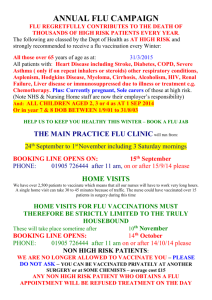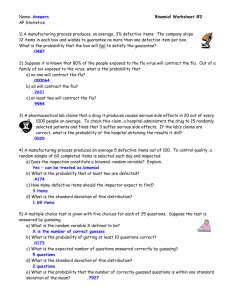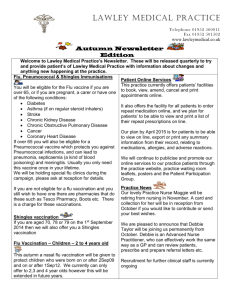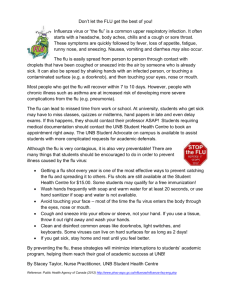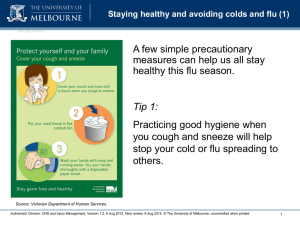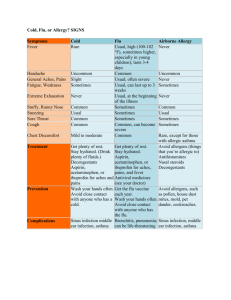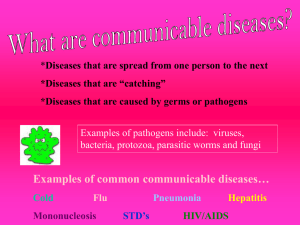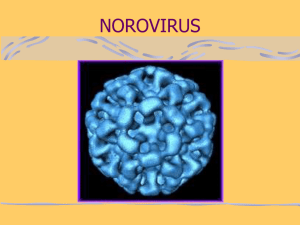Influenza
advertisement
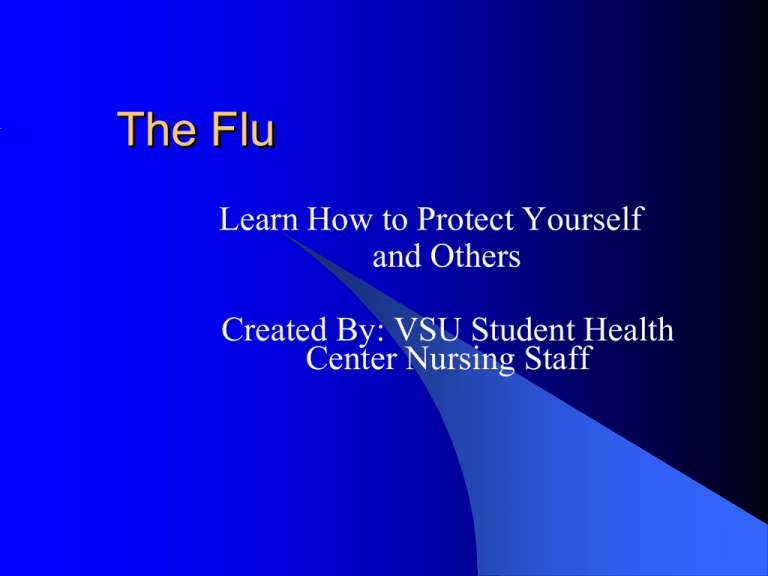
The Flu Learn How to Protect Yourself and Others Created By: VSU Student Health Center Nursing Staff The Flu Is a Contagious Respiratory Illness Caused by the Influenza Virus. It Can Cause Mild to Severe Illness, and at Times Can Lead to Death. Every Year in the Us, on Average: 5% to 20% of the population gets the flu. More than 200,000 people are hospitalized from flu complications. About 36,000 people die from the flu. Flu Symptoms Fever, headache, dry cough, sore throat extreme tiredness Runny or stuffy nose, muscle aches, stomach symptoms, such as nausea and vomiting and diarrhea How Flu Spreads Flu viruses spread mainly from person to person through coughing or sneezing. Many times you pass on the flu to someone else before you even know that you are sick. www.cdc.gov e x t Preventing Flu: Get Vaccinated The single best way to protect against the flu is to get vaccinated each year. October or November is the best time to get vaccinated. Flu Mist is also available, it is sprayed directly into the nostril. Who Should Not be Vaccinated People with a severe allergy to eggs People who have had a reaction to the vaccine in the past People who have a moderate or severe illness with a fever should wait to get the vaccine until their symptoms lessen The Flu Shot: The viruses in the flu shot are killed, so you cannot get the flu from a flu shot. Some minor side effects are: Soreness, redness, or swelling at the injection site Fever (100 degrees or less) Aches Taking Tylenol for a couple of days should alleviate any problems that you have. Good Health Habits for Prevention Avoid close contact Stay at home when you are sick Cover your mouth and nose Clean your hands Avoid touching your eyes, nose or mouth Practice other good health habits: plenty of sleep, manage your stress, drink plenty of fluids and eat nutritious foods. Where to Get More Information www.cdc.gov VSU Student Health Center Lowndes County Health Department Source Calhoun, N. (2007) Journeyworks Publishing, Santa Cruz, CA. www.journeyworks.com.
